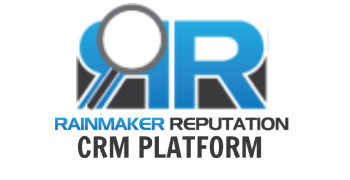
Identify the Signs of Unmanageable Debt: Essential Indicators to Recognize
Debt consolidation loans serve as a crucial financial instrument for those grappling with overwhelming financial responsibilities. However, it is imperative to understand the right moment to explore these options. You should consider seeking debt consolidation only when your existing financial commitments have escalated beyond what you can effectively manage. Recognizing the indicators of unmanageable debt is the essential first step towards reclaiming control over your financial destiny.
When properly managed, debt can be leveraged as a stepping stone towards constructing personal wealth and meeting financial aspirations. Conversely, if left unregulated, it can spiral into severe financial distress, creating a situation where recovery appears unattainable. Understanding when debt transforms into a liability is crucial for preserving your financial health and ensuring long-term stability.
Evaluate Your Financial Condition: Grasping Your Debt Tolerance Level
It’s vital to acknowledge that the total amount of debt isn’t the only factor to consider; the focus should be on your monthly repayment obligations. If your monthly payments are manageable and fit comfortably within your budget, this is a positive indicator of your financial health. However, if fulfilling these payments feels like an uphill struggle, you may be nearing a financial crisis.
This is precisely where debt consolidation loans can play an essential role in alleviating your financial burden by lowering your overall monthly payment obligations. By transforming what may seem like an insurmountable debt into a more manageable situation, you can work towards restoring your financial stability and peace of mind.
One key metric to assess your capacity to manage debt is the ratio of your monthly debt repayments to your gross monthly income—this is your income before taxes and other deductions. This important measure, known as the debt-to-income ratio, acts as a crucial indicator of your financial health and overall stability.
While there is no definitive standard for an acceptable debt-to-income ratio, a figure exceeding one-third (or 33%) of your gross monthly income allocated to recurring debt payments can highlight potential financial troubles. This is particularly true in the absence of a mortgage, as lenders typically hesitate to approve mortgage applications when your debt-to-income ratio surpasses the low 40s percentage-wise.
It’s essential to remember that a mortgage is also a form of debt, and including it in your calculations can further elevate your debt-to-income ratio. In certain scenarios, financial advisors may suggest that a debt-to-income ratio approaching 50% could still be manageable, depending on individual circumstances and financial strategies.
In general, a debt-to-income ratio ranging from approximately 35% to 49% often serves as a cautionary signal of potential financial difficulties on the horizon. However, it’s crucial to realize that these guidelines aren’t universally applicable. The nature of the debt you carry significantly influences what is manageable for you. For instance, secured loans like mortgages are usually viewed more favorably compared to unsecured debts, such as high credit card balances, which can pose significant risks to your financial well-being.
Explore Essential Tools and Resources for Mastering Debt Management
 Debt Consolidation Loans UK: Benefits and Drawbacks
Debt Consolidation Loans UK: Benefits and Drawbacks
In-Depth Analysis of Debt Consolidation Loans in the UK: Advantages and Disadvantages
 Debt Consolidation Loan Options for Home Improvements
Debt Consolidation Loan Options for Home Improvements
Enhance Your Home’s Equity with a Debt Consolidation Loan for Renovations
 Debt Consolidation Loan: Is It Suitable for You?
Debt Consolidation Loan: Is It Suitable for You?
Is a Debt Consolidation Loan the Right Financial Solution for Your Needs?
Categories:
Tags:


One response
It’s so interesting how the conversation around debt is evolving, especially with more people sharing their experiences. I remember when I faced my own struggles with debt; it was a huge wake-up call that made me rethink my habits and financial decisions. The idea that debt can be a tool for wealth-building in the right circumstances is powerful, but it takes a lot of awareness and discipline.